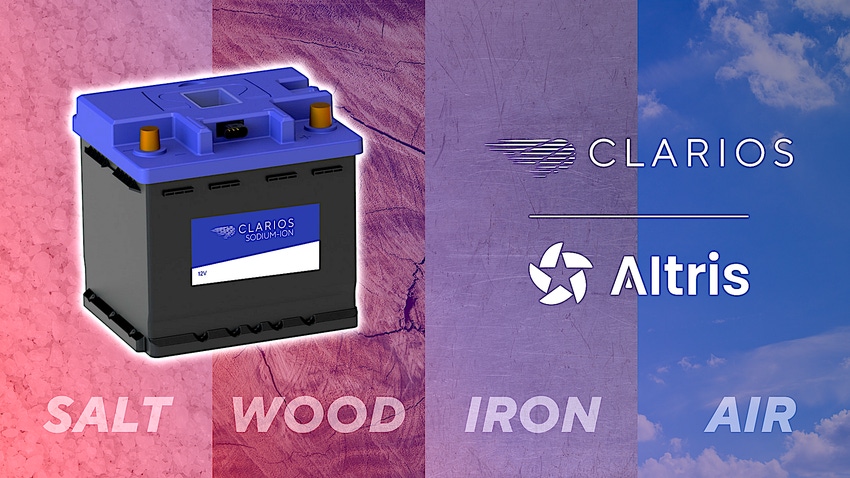Clarios Incorporates Energy-Dense Altris Sodium-Ion Tech
Sodium-ion cells provide high energy density for Clarios’s low-voltage batteries.

At a Glance
- No sodium
- No nickel
Low-voltage (as high as 60 volts) battery leader Clarios is partnering with Swedish sodium-ion battery cell startup Altris to bring this new technology to high-volume manufacturing for automotive applications.
Clarios shipped 153 million batteries in 2023, the vast majority of which were conventional 12-volt lead-acid batteries. But 28 percent of them were advanced batteries, like absorbent glass-mat (AGM) lead-acid batteries, a share that has grown rapidly from 19 percent the year before.
This increased interest in better technology for 12-60-volt batteries is because of the increased reliance on high-power systems such as brake-by-wire, steer-by-wire, and active anti-roll bars, reported Federico Morales Zimmerman, Clarios vice president and general manager for global OEM customers, products, and engineering during a media presentation attended by Design News. “Loss of power for Level 3 [driver assistance] is not an option,” he observed.
The potential arrival of sodium-ion technology in the low-voltage automotive battery space is fortuitous. “It is perfectly matched for the low-voltage space,” he said. The company’s AGM batteries strain to meet the demands of some of these emerging automotive systems. “Limitations for functional safety and cycling for lead-acid AGM batteries push need for sodium-ion,” said Zimmerman.
Sodium-ion batteries deliver increased energy density, with 160 watt-hours per kilogram. That’s today’s performance, but Altris says it is on a glide path to raising that to 200 Wh/kg, which would put it squarely in the range of lithium-ion energy density.
According to EV battery supplier Fluxpower, conventional lead-acid energy density is 30-50 Wh/kg, while nickel-cadmium batteries are good for 45-80 Wh/kg, nickel-metal hydride batteries provide 60-120 Wh/kg, and lithium-ion covers a range from 50-260 Wh/kg, depending on the specific chemistry employed.
However, while energy density is good, demanding high-power systems that will use these batteries need power more than energy. Clarios is working to improve the power characteristics of sodium-ion batteries, and “The first technical results are very promising,” Zimmerman stated. “It reaches capability above lead-acid and fairly close to lithium-ion. We are confident we can reach the lower end of the lithium-ion.”
This means that sodium-ion batteries offer the potential to provide power for crucial systems without saddling cars with still more weight. Also, it means that the batteries are free from the challenges related to the materials used in lithium-ion batteries that might otherwise be used.
That includes the lithium itself, the processing of which is performed almost entirely in China currently, leaving battery makers and their customers at the mercy of China in an increasingly unstable international environment. “With the elimination of lithium, you have a sustainable material and also a supply chain-independent material,” remarked Zimmerman. “Freedom from the Chinese supply chain is almost impossible for any lithium-based product.”
Clarios points out that sodium-ion batteries are “inherently sustainable and easy to recycle, made from salt, wood, iron, and air.” Additionally, these materials are abundant, available, and free from conflict minerals and toxic elements.
Of course, there is a difference between battery performance in a lab and performance on the road, so Clarios is working to develop the Altris cell technology into a useable automotive product. “We will see obstacles,” Zimmerman acknowledge. “We are trying to understand the thermal requirements for sodium-ion. Can we use this for the wide range of temperatures (-25C - 80C) OEMs need?”
This will take time, but Clarios says that it is on track to deliver sodium-ion batteries to customers by the end of the decade.
About the Author(s)
You May Also Like





